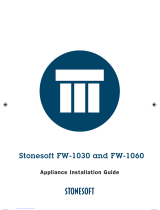
MX204 Router Overview
The Juniper Networks MX204 Universal Routing Platform is an Ethernet-optimized edge router with
400-Gbps capacity that provides both switching and carrier-class Ethernet routing. The MX204 router
runs Junos operating system (Junos OS), enabling a wide range of business and residential applications
and services, including high-speed transport and virtual private network (VPN) services, next-generation
broadband multiplay services, and high-volume Internet data center internetworking. Each router provides
full duplex, high-density Ethernet interfaces and high-capacity switching throughput and uses the Junos
Trio chipset for increased scalability of Layer 2 and Layer 3 packet forwarding, buffering, and queuing.
Benefits of MX204 Router
•
System Capacity—MX204 provides 400 Gbps of throughput and supports high-density 100-Gigabit
Ethernet interfaces, and also discrete and breakout 10-Gigabit Ethernet and 1-Gigabit Ethernet
interfaces—all in a single rack unit while consuming only 0.9 W/Gb.
•
The Programmable Chipset—The chipset implemented in the MX Series routers has a programmable
forwarding data structure that allows fast microcode changes in the hardware itself, and a programmable
lookup engine that allows inline service processing. the chip’s programmable QoS engine supports coarse
and fine-grained queuing to address the requirements of core, edge, and aggregation use cases.
•
Always-on infrastructure base—MX Series routers ensure network and service availability with a broad
set of multilayered physical, logical, and protocol-level resiliency aspects. Junos OS Virtual Chassis
technology on MX Series routers supports chassis-level redundancy and enables you to manage two
routers as a single element. Multichassis link aggregation group (MC-LAG) implementation supports
stateful chassis, card, and port redundancy.
•
Application-Aware Networking—On MX Series routers you can use deep packet inspection to detect
applications, and by using the user-defined policies, you can determine traffic treatment for each
application. This feature enables highly customized and differentiated services at scale.
•
Junos Telemetry Interface—Using the Junos telemetry interface data, you can stream component-level
data to monitor, analyze, and enhance the performance of the network. Analytics derived from this
streaming telemetry can identify current and trending congestion, resource utilization, traffic volume,
and buffer occupancy.
•
Integrated Hardware-Based Timing— You do not need to use external clocks because MX Series routers
support highly scalable and reliable hardware-based timing, including Synchronous Ethernet for frequency,
and the Precision Time Protocol (PTP) for frequency and phase synchronization. Synchronous Ethernet
and PTP can be combined in a hybrid mode to achieve a high level of frequency (10 ppb) and phase (<1.5
uS) accuracy.
21





















